Affiliate disclosure: This post may contain affiliate links. Please see our Privacy Policy.
Birch Polypore mushrooms (Fomitopsis betulina, formerly Piptoporus betulinus) are potent medicinals with a long history of human use. This easy to identify mushroom grows on birch trees and is relatively common anywhere birch are present.
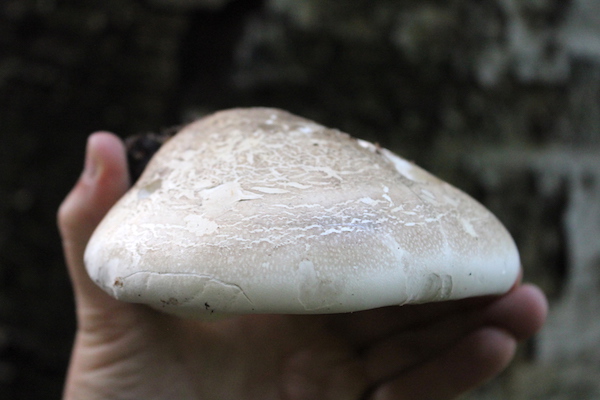
Humans have been using birch polypore mushrooms for a long time, and the earliest evidence of their use dates back 5,000 years.
The ancient body of a herder found buried in ice high in the Alps was recently unearthed with all his possessions perfectly preserved. He was carrying two mushrooms, Tinder Polypore (Fomes fomentarius) and Birch Polypore (Fomitopsis betulina). Neither mushroom is edible, but both a number of medicinal uses.
Birch polypore happens to be a great treatment for intestinal parasites (among other things), the very same type that was found mummified inside the ice man’s digestive tract.
While parasites are less of a concern for modern man, birch polypore also happens to be anti-bacterial, anti-viral, anti-inflammatory and immune-boosting. Those properties combined with its spongy texture make it an excellent field bandage, and modern extracts are used to combat disease as well.
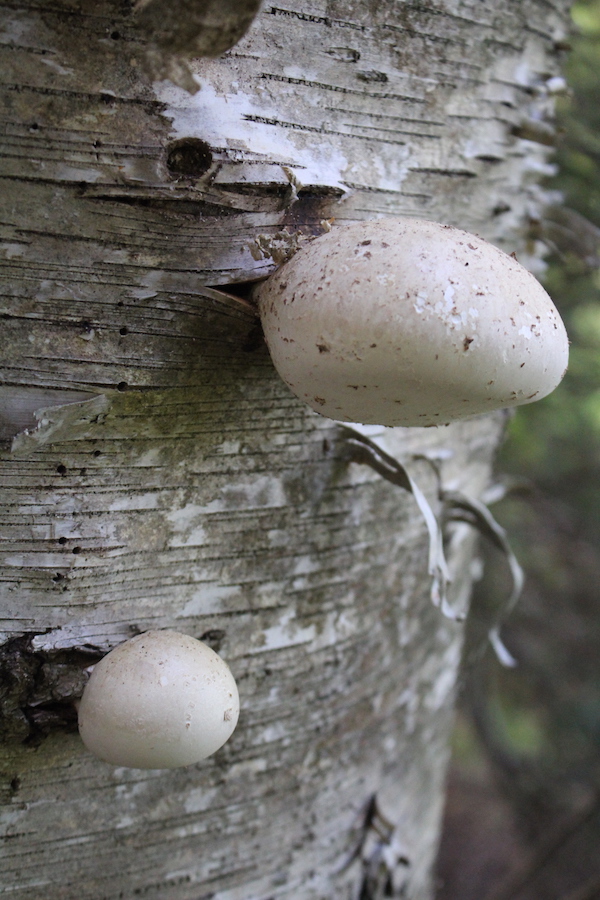
I’ve been hunting birch polypore mushrooms for a long time. Many years in fact.
Every year I find a few traces, moldy mushrooms past prime, and large pristine specimens high up out of reach.
They are common, almost as common as birch trees, but it can be tricky to find harvestable birch polypore mushrooms within reach.
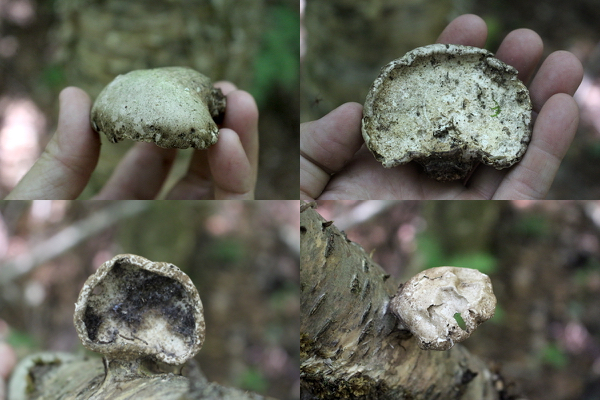
Fomitopsis betulina is a parasite of birch, and it attacks trees that have been weakened by disease, overcrowding or injury. It’ll often start at some vulnerable or damaged portion of the trees crown. From there it’ll work it’s way down to the trunk, slowly killing the tree in the process.
It’s sometimes easiest to spot birch polypore on the forest floor, as the infected branches break and drop during storms. Once you’ve found an infected tree, keep an eye on it. It’ll be a source of the fungus until it’s eventually killed by it, and then still long after as the Birch polypore also consumes deadwood.
Within a few years of the first dropped branches, watch for eruptions all along the trunk as the fungus progresses and provides harvestable mushrooms lower down.
With enough patience, one of the trees I’ve been watching has finally started producing along its reachable trunk, and all of a sudden I was able to harvest them by the bucket load.
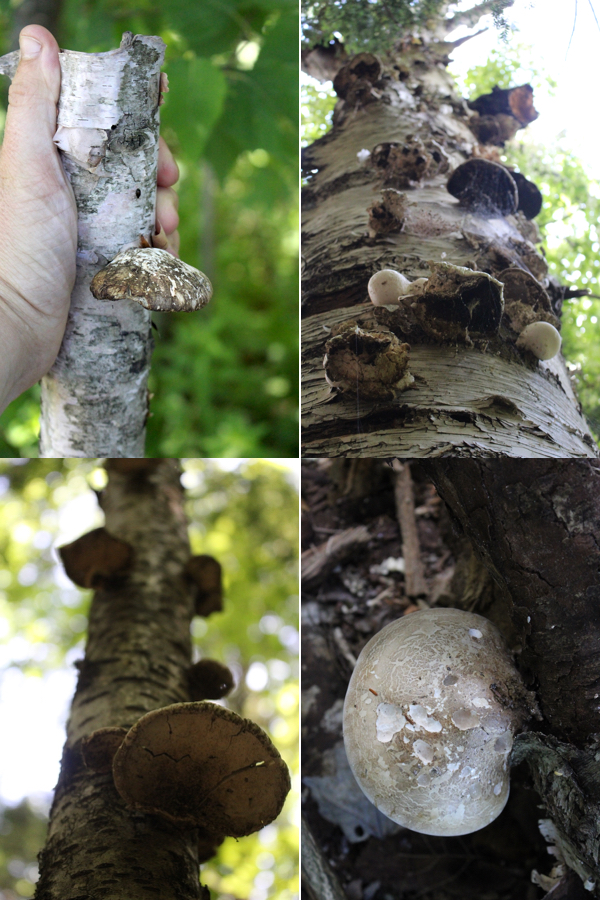
Identifying Birch Polypore
Birch polypore grows primarily on birch trees, and has no look-alikes.
Still, what the author of a mushroom book considers a “look-alike” is often very different than what a novice in the field optimistically hopes is the mushroom that’ll fulfill their quest.
Be sure to double-check with multiple sources, as always, when identifying any mushroom.
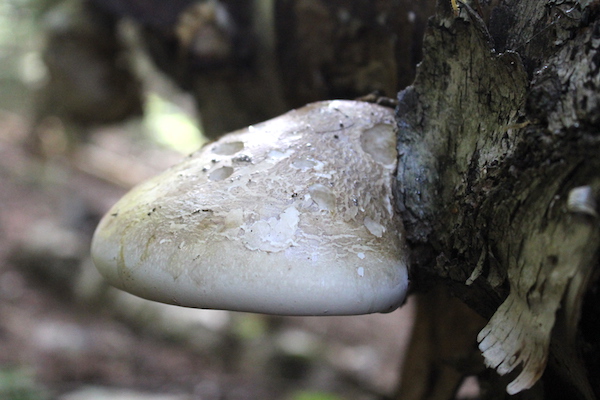
Generally, birch polypore mushrooms are kidney-shaped or semi-circular. Sometimes they’re directly attached to the tree with no stalk, and other times they have a short narrow stalk before widening out.
Young birch polypores can be a bit more round as they’re just bursting through the tree bark.
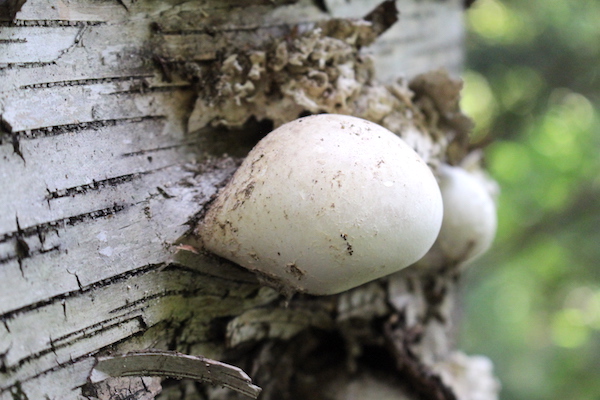
Their surface varies from white to grey to brown, and various light-colored shades in between. Most that I’ve seen have had a tan-ish hue on the top side.
The pore surface is covered by very tiny pores that are just barely visible, and it’s usually white to grey in color.
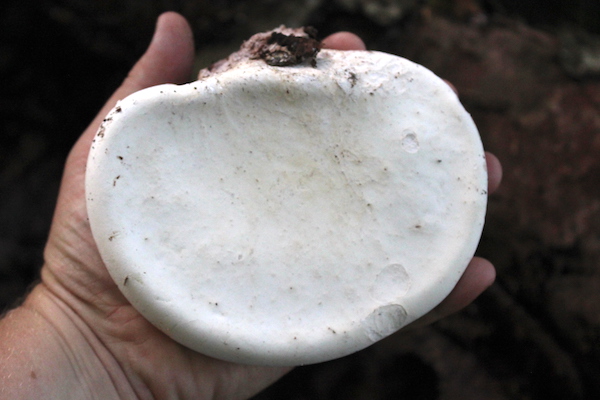
The outer ridge of the pore surface is often rounded, with a slightly raised lip right along the edge.
Their shapes can vary quite a bit in the field though, so this is all only rough guidance.

Generally, a spore print is used to identify mushrooms, but it won’t help you much here. Birch polypore’s spores are tightly bound within the pore surface and it won’t give them up until long after it’s useful to harvest.
Still, the spore print is white in case yours happens to be giving up its spores conveniently for printing.
The mushrooms themselves are incredibly lightweight, and it almost feels like you’re holding styrofoam brick. Cut one in half and you’ll find a dry, spongy texture that’s not all that different than styrofoam too.
They’re usually white or off white on the inside.
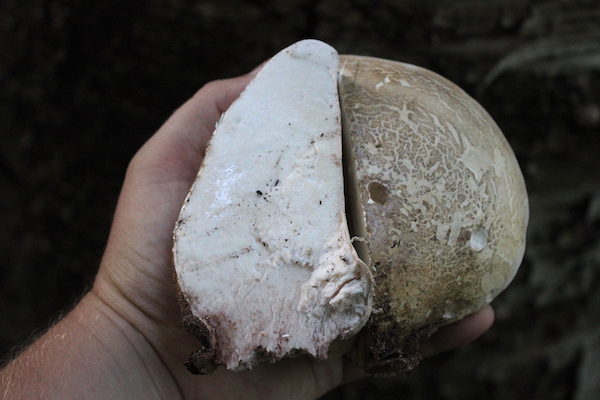
Birch Polypore Uses
While birch polypore has been used in folk medicine for thousands of years, how does it stand up to modern scientific testing? Pretty well actually.
According to one peer-reviewed study,
“Modern research confirms the health-promoting benefits of F. betulina. Pharmacological studies have provided evidence supporting the antibacterial, anti-parasitic, antiviral, anti-inflammatory, anticancer, neuroprotective, and immunomodulating activities of F. betulina preparations. Biologically active compounds such as triterpenoids have been isolated. The mushroom is also a reservoir of valuable enzymes and other substances…. In conclusion, F. betulina can be considered as a promising source for the development of new products for healthcare and other biotechnological uses.”
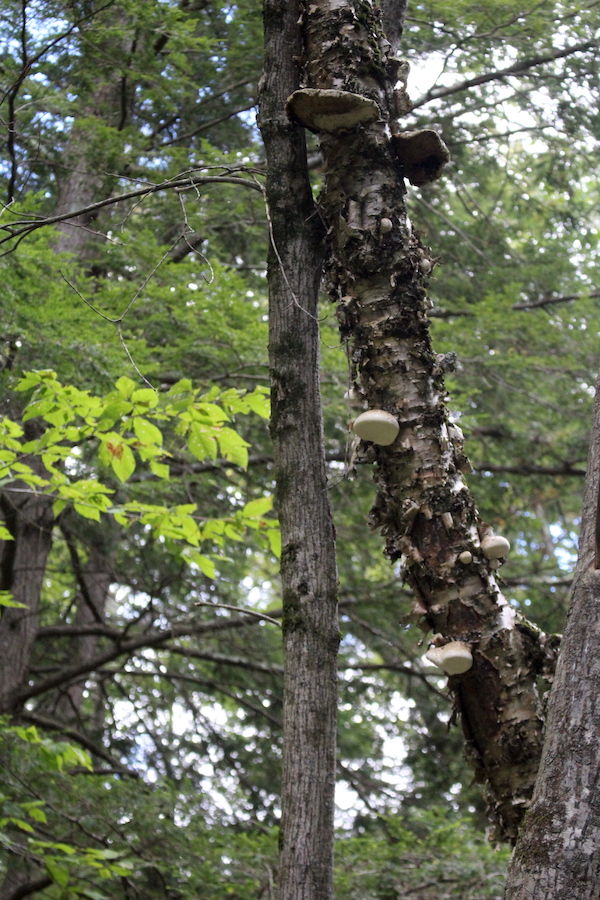
Though it’s not considered strictly “edible” because it’s about the same as eating styrofoam, birch polypore is generally dried for tea or made into an alcohol extract (tincture).
The same strange texture that makes it difficult to consume actually makes it a pretty good wound dressing. According to The Mushroom Hunter,
“By digging out strips of the flesh just beneath the pore surface of the mushroom, the birch polypore can be used as a safe, clean, blood stanching, anti-inflammatory bandage or wrap over cuts sustained while hiking in the woods.”
Beyond Birch polypore’s medicinal uses, it also has other practical uses in the field. It goes by the alternate name “razor strop fungus” because historically it was used to hone blades to razor sharpness (and maintain the edge on a blade). While it won’t sharpen a dull blade, families that couldn’t afford leather would seek out these mushrooms for use as sharpening strops.
Lastly, dried birch polypore can be used as tinder for fire-starting. The dried mushroom will accept sparks readily, allowing you to start a fire when other dry tinder is hard to come by. Historically, it was used to transport fire, since once lit, birch polypore will smolder for hours if not days.
This demo explains the process neatly:
Birch trees actually grow a number of types of mushrooms that can be used for tinder. The most well known is actually called Tinder Mushroom or Tinder Polypore (Fomes fomentarius), and I’ve often seen it growing in mass right alongside Birch polypore.
Chaga Mushrooms, another well known medicinal mushroom that grows on birch, are also excellent tinder mushrooms. They’re quite valuable since they’re in such high demand for the medicinal market, so they’re not often used as tinder these days, but good to know if you find yourself needing dry tinder in an emergency.
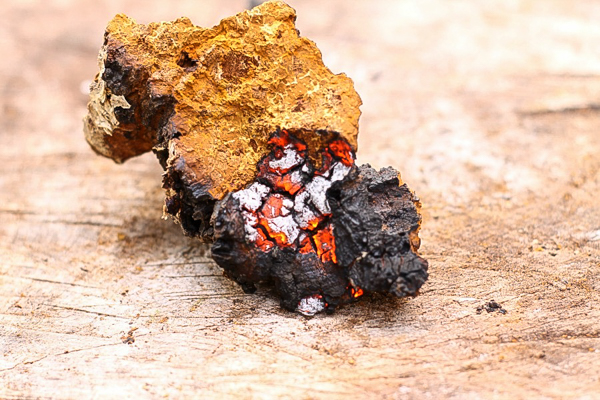
More Mushroom Foraging Guides
Looking for more mushroom foraging guides? Read on…
- Puffball Mushrooms
- Shaggy Mane Mushrooms
- Lion’s Mane Mushrooms
- Chanterelle Mushrooms
- Morel Mushrooms
- Witches Butter Mushrooms
- Reishi Mushrooms


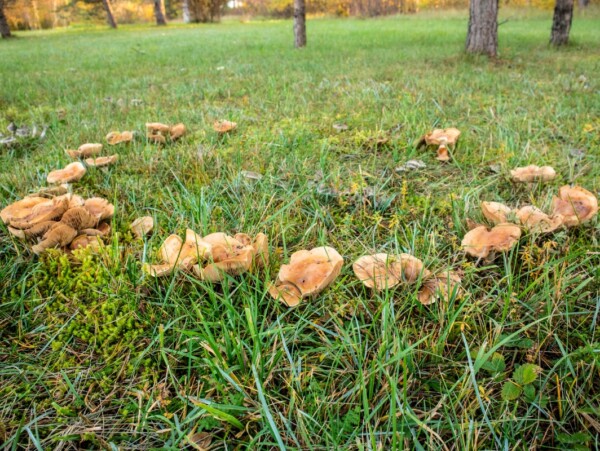
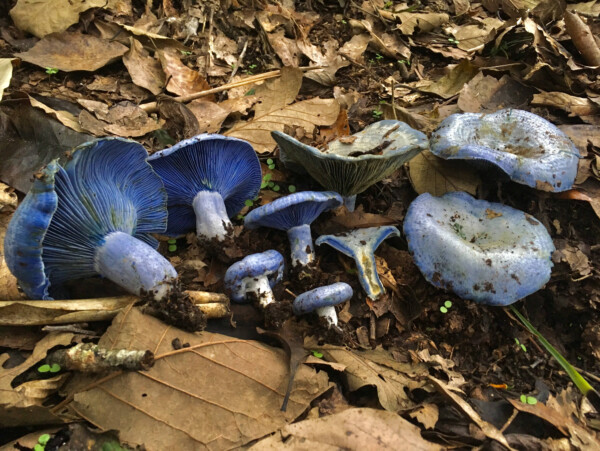
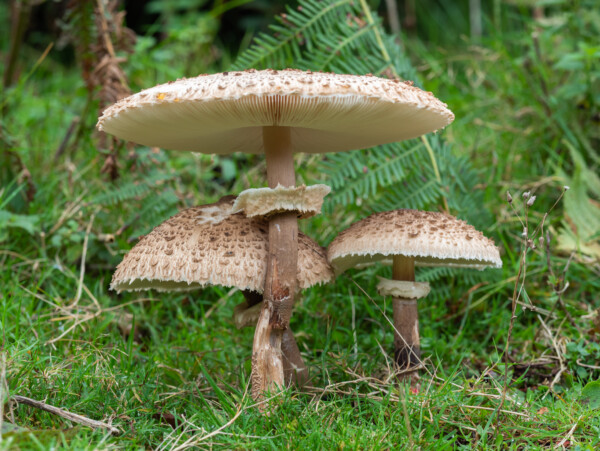
I started using mushrooms over the last 10 years. I use Chaga. Ressie. Turkey Tail, Lions Main, and this summer I found a Birch Polypore and harvested it and made a Tichnor . out of it. I started Using it and one day shortly after that I noticed that the Neuropathy in my legs was getting better, I did not know for sure that the mushroom was doing it, I read you posting as to what it treats and you stated it was used for that. I just found another one this week and I made more med from it and will continue to explore the ways of natures cure.
That’s great. Thanks so much for sharing.
I brought three fallen birch trees into my new apt…4 years ago.–as decor. Last year they started sprouting polypores!
That’s awesome!
I loved your video. I just moved to a 41 acre lot and I go crazy with those mushrooms. I use a lot of them for my fairy gardens I make, but now I will be making tea so I can drink it while using them for my crafts. Lol!
Thanks for sharing.
You’re welcome. We’re so glad you enjoyed the post.
Hi! Thank you so much for this article! You should come to sweden right now 😀. We have a lot altough some of it is not “mature”.
Do you have any more information or links about drying, making the tea or extracts or other uses?
We don’t have anything specific to birch polypores in regards to the uses. Here is a link for a reishi mushroom tincture that could be helpful to get you started. https://practicalselfreliance.com/reishi-mushroom-tincture/ I don’t have any specific resources for drying and for teas but if you find something good, come back and let us know.
I’ve used birch polypore as soothing bandages on my private parts when I’ve had an outbreak of itchy sores caused by genital herpes from the herpes simplex virus. The bandages adhere to my skin, completely reduce irritation, and I believe, based on witnessing my own body before I’d “discovered” birch polypore, that recovery is faster than without birch polypore bandages.
To make the bandage, I take fresh polypore, peel off the tube like pores on the underside, and the harder exterior, just leaving the suede-like, dense spongy inter layer. I cut that thinly to about 1/8″ and apply that to my skin. The relief is immediate.
Cutting the polypore into slices takes patience. I use a smalish serrated knife and simply enjoy the process and the smell and texture of the birch polypore, which to me is soothing in and of itself 🙂
According to the Mayo Clinic, “genital herpes is a common sexually transmitted infection caused by the herpes simplex virus (HSV)”.
Good to know!
Good info…I just harvested a wonderful lot from a birch base after the top fell over, there are more up top, larger, not accessible on a sister tree but I was able to harvest quite a bit, prep and dehydrate them. Thanks for putting up the info and photos. Nice!
Cheers from northeast Kingdom VT
You’re welcome. So glad you enjoyed the article. Thank you so much for sharing.
Wow a friend and I found this growing on a birch tree. We have been trying for quite a while to identify this and find uses for it. We even tried Facebook groups. You are the first to identify it we spent many hours searching the net. You really should write a book there are many things you have identified that others could not.
Oh man – I’ve been playing with these things my whole life and never knew about all these uses! We used to use them as “writing surfaces” when we’d find them in the Michigan woods, etching words into their soft undersides with sticks. I went looking for chaga this past weekend and didn’t find any, but now I know where all my birch trees are I’ll go back out again this weekend looking for polypores!
yes go back yesterday i went looking for chaga mushrooms and found 2 kg all in one tree. just keep on searching you will find them . so satisfying and i used to pay 60 euros for 100g of chaga mushroom , now i got plenty. also this birch polypore and horse shoe mushroom are really good to make tea as well for the imune system . we are awakening from our deep sleep . mother nature need to kick our butt .we are unaware bratts and need to put our minds and bodies to work . well done and good luck with ur hunting.
Our cat was diagnosed with lung cancer in April of 2022 and given 2 months to live. We started her on a regimen of birch polypore tincture, chaga and mineral supplements. She is 20 months past diagnosis now. It’s not a cure, but has extended her life well past our expectations without the nasty side effects of chemo and radiation.